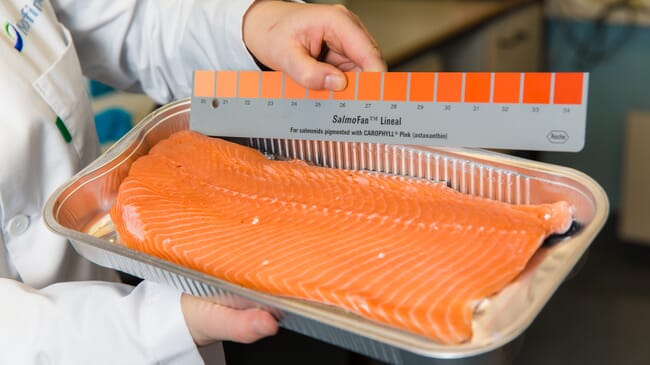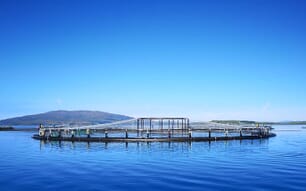
© Tom Haga
The research, funded by the Norwegian Seafood Research Fund (FHF), indicates that repeated mechanical delousing may negatively impact fillet coloration, a finding that has not been documented previously.
The study, led by senior scientist Trine Ytrestøyl and her team, drew on multiple data sources, including responses from Norwegian fish farmers collected in 2023, historical fillet colour data from commercial salmon production between 2012 and 2023, and findings from Nofima’s research and development licenses. The results provide a comprehensive overview of the current status of fillet pigmentation in the industry.
Impact of mechanical delousing
One of the key findings of the study is the correlation between mechanical delousing treatments and reduced fillet colour quality. The researchers suggest that the stress caused by delousing may increase the salmon's consumption of antioxidants such as astaxanthin, which is crucial for pigmentation. Additionally, reduced feed intake due to stress could lead to lower slaughter weights, further affecting fillet colour. Fish slaughtered at lower weights to avoid additional delousing treatments exhibited poorer colour quality, highlighting a potential issue for the industry.
“There is a high degree of correlation between what the fish farmers report in the questionnaire and what we observe affecting pigmentation in the data analysis, so there is reason to believe it provides a realistic picture of the situation,” said Ytrestøyl.
Variation in pigmentation issues
The study also found significant variability in how fish farmers perceive and experience pigmentation challenges. While some reported issues in only two percent of their harvest, others indicated that up to 40 percent of their fish exhibited reduced pigmentation. This variation is also reflected in the farmers' standards for acceptable fillet colour, which range from 24 to 27 on the SalmoFan scale, and between five and seven milligrams of astaxanthin per kilogram of fillet.
Historical data analysed by Nofima suggests that the colour intensity of Norwegian salmon decreased slightly from 2012 to 2021, with a slight improvement noted in subsequent years. However, the data also show increased variability in fillet colour, aligning with the survey findings that some producers are facing more significant challenges than others.
Efforts to improve pigmentation
To address pigmentation issues, nearly all respondents reported implementing measures such as increasing astaxanthin levels in feed (currently 50-70 mg per kg) and enhancing the feed with omega-3 fatty acids (EPA and DHA) and vitamins. While these strategies have shown positive results, they come at a higher cost, prompting further investigation into the root causes of pigmentation problems.
Ytrestøyl emphasised the need for careful planning, particularly considering the seasonal variations in pigmentation. The research showed that rapid growth could negatively impact pigmentation, whereas higher slaughter weights tended to improve colour. The negative impact of multiple mechanical delousing treatments was particularly notable, suggesting the need for alternative approaches to managing lice that minimize stress on the fish.
Unexpectedly, the study also identified significant differences in fillet colour at slaughter between different hatchery fish suppliers, indicating that the hatchery phase may play a crucial role in determining final pigmentation levels. Nofima plans to explore this finding further to understand its implications for the industry.
The study’s comprehensive mapping of data provides valuable insights for fish farmers looking to address pigmentation challenges in farmed salmon. As the industry continues to refine its practices, these findings will help inform strategies to improve fillet colour quality, ensuring the continued success of Norwegian salmon in the global market.




